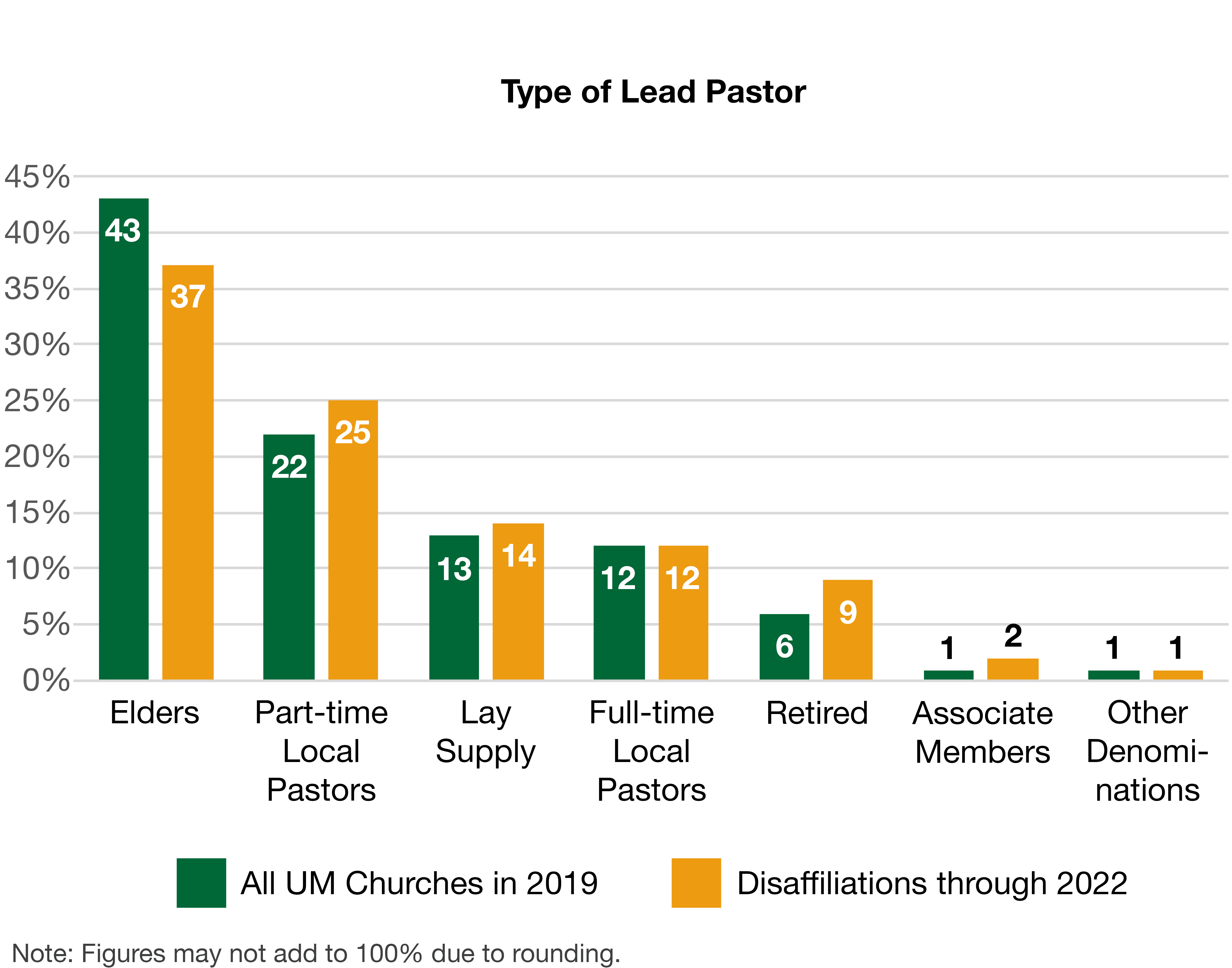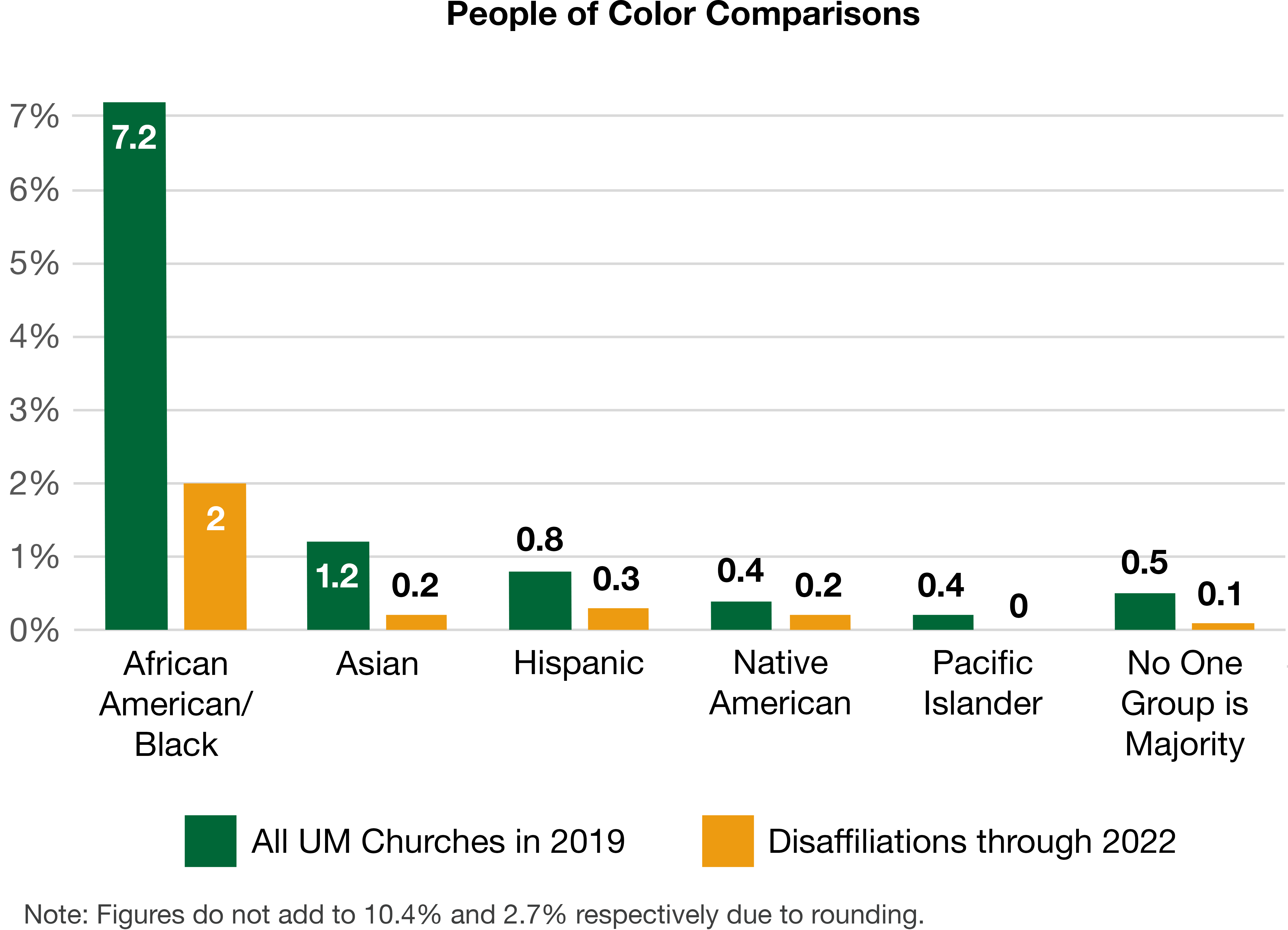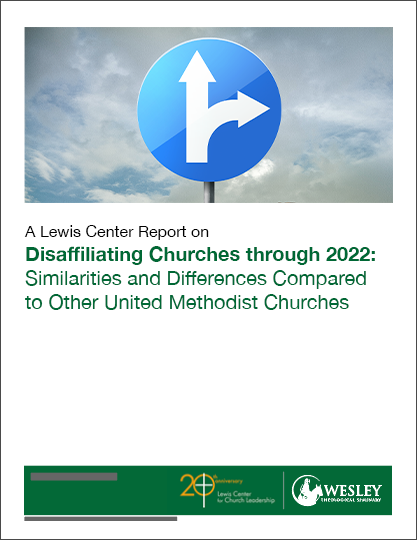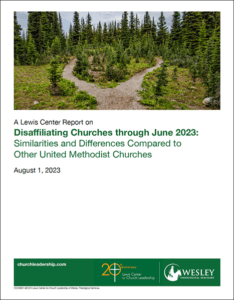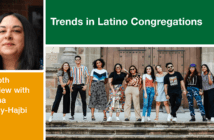What are the characteristics of churches disaffiliating from the United Methodist Church? Lovett H. Weems Jr. reports that there are more similarities than differences between the cohort of disaffiliating churches and the total pool of all United Methodist churches. But disaffiliating churches are overwhelmingly in the South with majority white memberships. They are also more likely to have a male pastor and are less likely to have an active elder as pastor.
Please also see the Leading Ideas article “Updated Report on United Methodist Disaffiliating Churches” published August 8, 2023.
Approximately 2,000 churches disaffiliated from the United Methodist Church through the end of 2022 following the passage of special disaffiliation legislation in 2019. It is anticipated that more will exercise this option by the end of 2023 when the disaffiliation legislation expires. The 2019 legislation made it possible for a church to disaffiliate and keep its property after fulfilling certain financial obligations. This report seeks to examine in what ways the departing churches are similar to or different from the profile of United Methodist churches as a whole.
Methodology
We use 2019 as the comparison year since disaffiliations occurred primarily after 2019. We compare the characteristics that disaffiliating and non-disaffiliating churches had in 2019, before the disaffiliations occurred. There are limitations to this approach, but we believe it serves to compare the two sets of churches at a time when we have sufficient data for almost all the churches (the total and those disaffiliating) and before the skewing of statistics that may have occurred during the heart of the pandemic.
In 2019, there were 30,541 total United Methodist churches in the United States. We were able to identify the names of 1,967 disaffiliating churches, representing 6.6 percent of total churches. We examine three aspects for comparisons:
- Pastoral leadership characteristics,
- Congregational characteristics, and
- Location characteristics.
Ways disaffiliating churches are most different from the UMC as a whole
There are more similarities than differences in comparing the cohort of disaffiliating churches with the total pool of all United Methodist churches. However, there are differences as well. The areas in which disaffiliating churches appear to vary most prominently from United Methodist churches as a whole include:
- Disaffiliating churches are less likely to have an active elder as pastor.
- Disaffiliating churches are more likely to have a male pastor.
- Disaffiliating churches overwhelmingly have a majority white membership.
- Disaffiliating churches are overwhelmingly in the South.
- Disaffiliating churches are in less heavily populated counties.
Leadership characteristics
Clergy status
Compared to all United Methodist churches, disaffiliating churches have pastors who are less likely to be an active elder and more likely to be part-time local pastors, associate members, lay supply, and retired clergy.
Only 37 percent of disaffiliating churches were served by an active elder compared to 43 percent for all United Methodist churches.
Compared to all United Methodist churches, disaffiliating churches have pastors who are more likely to be male.
Only 17 percent of disaffiliating churches have a woman as lead pastor compared to 29 percent for United Methodist churches as a whole.
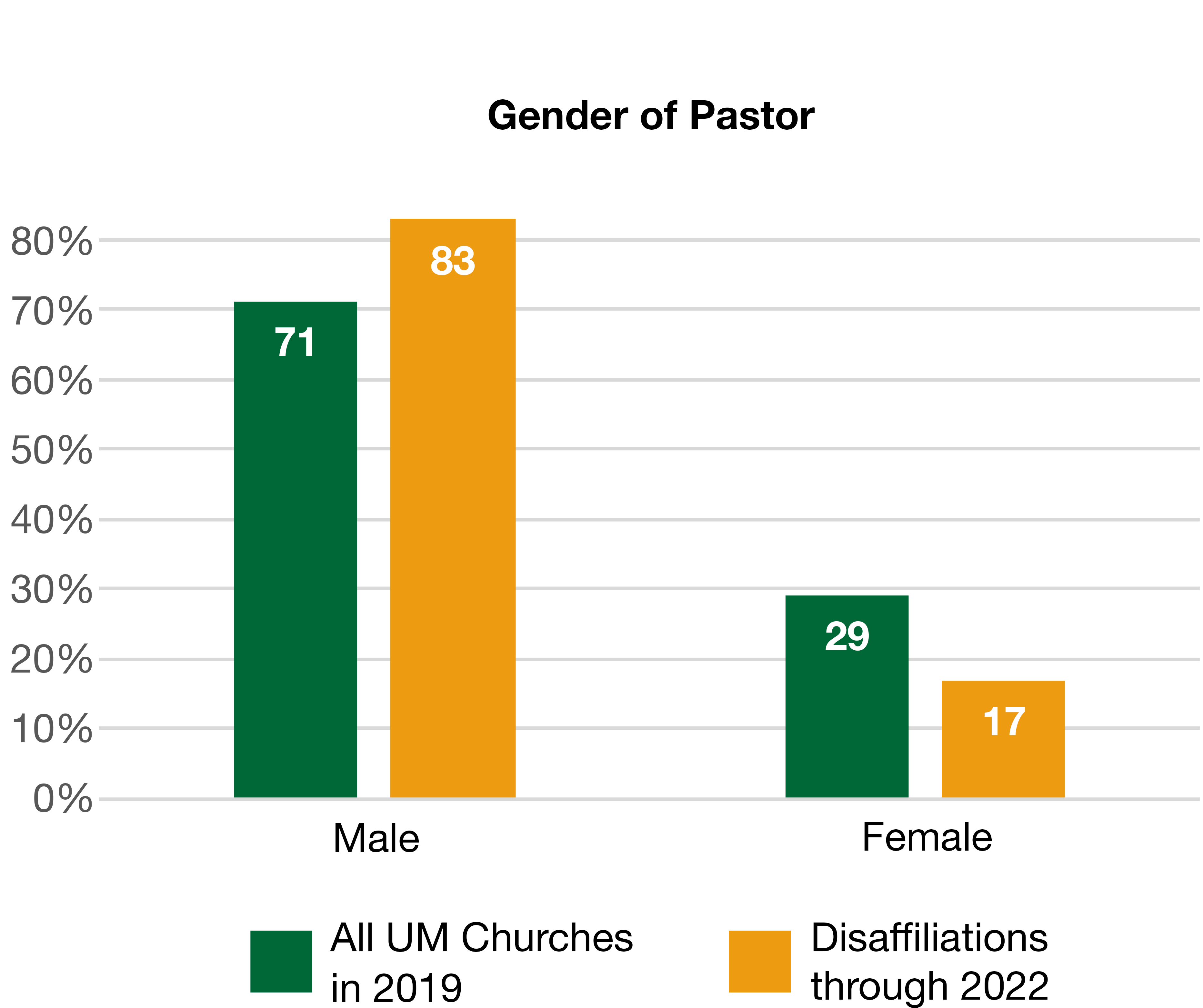
Clergy age
Compared to all United Methodist churches, disaffiliating churches have pastors who are about the same age though with slightly more who are retired.
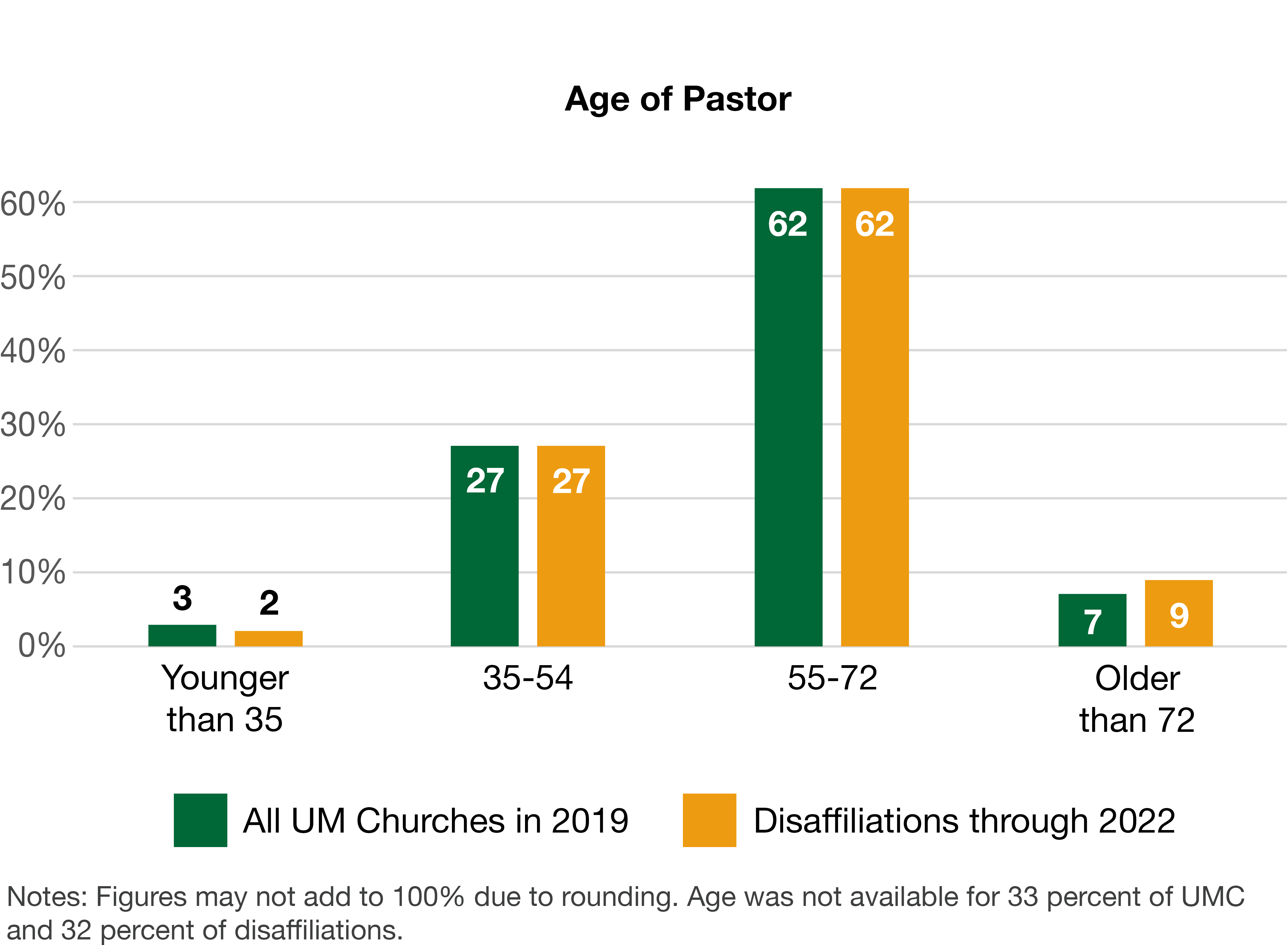
Congregational characteristics
Race and ethnicity
Compared to all United Methodist churches, disaffiliating churches are overwhelmingly white.
Among disaffiliating churches, over 97.3 percent report memberships that are majority white compared to 89.6 percent of United Methodist churches as a whole that are majority white.
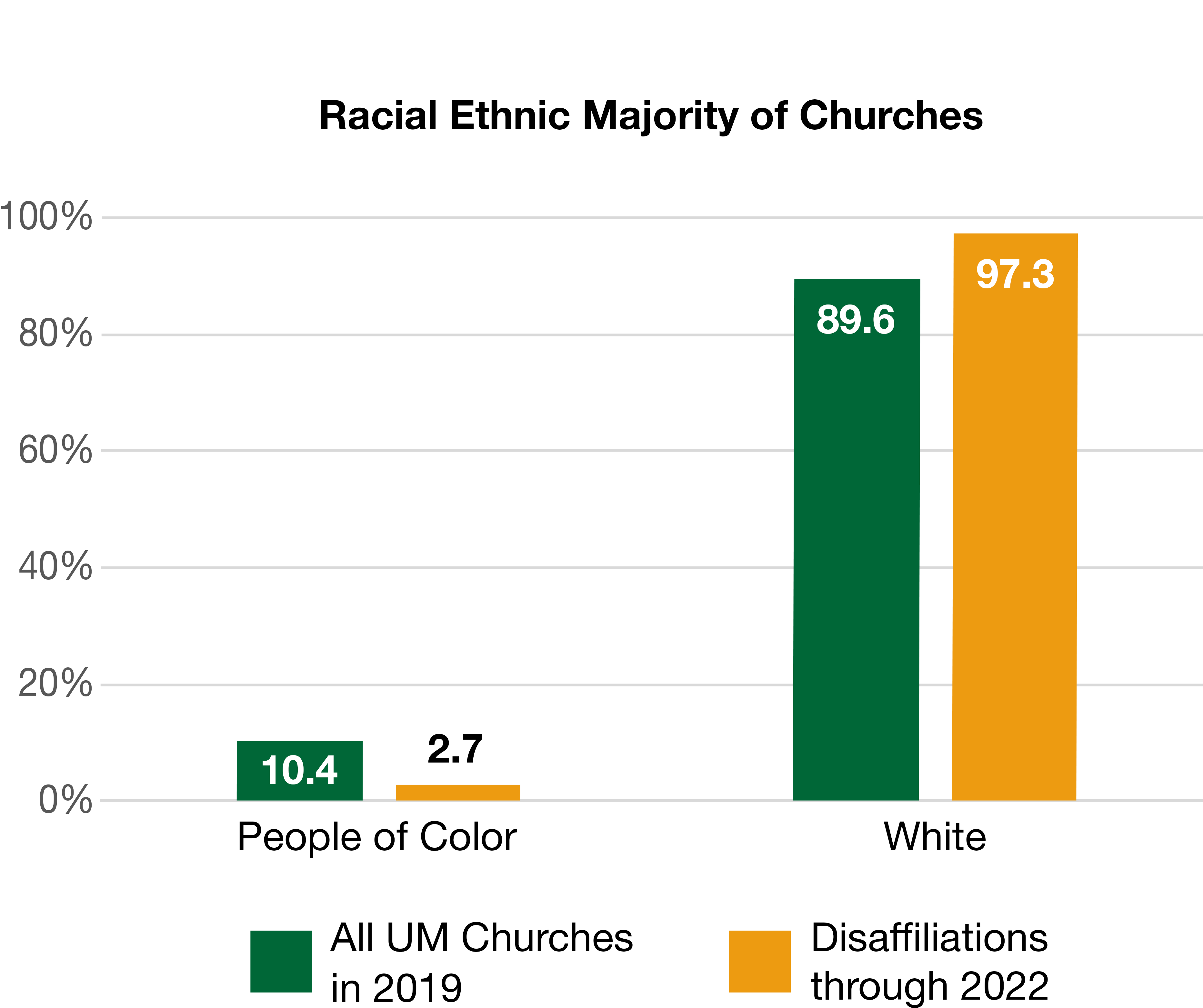
Compared to all United Methodist churches, disaffiliating churches are about the same mixture of churches by attendance size groupings.
Disaffiliating churches and all United Methodist churches match in the sizes of congregations based on worship attendance cohorts for churches with 51 or more attendance. For the nearly two-thirds of total United Methodist churches and disaffiliating churches with 50 or fewer in attendance, disaffiliating churches have proportionately more in the 26-50 attendance group and fewer in the 25 or fewer attendance group than the United Methodist pool as a whole. The median worship attendance of both groups of churches is about the same (38 for UMC and 40 for disaffiliations).
| Percentage of Churches by Average Worship Attendance (AWA) | All UM Churches in 2019 | Disaffiliations through 2022 |
| 1,000+ AWA | 1% | 1% |
| 501-999 AWA | 1% | 2% |
| 251-500 AWA | 4% | 4% |
| 101-250 AWA | 13% | 11% |
| 51-100 AWA | 20% | 20% |
| 26-50 AWA | 27% | 31% |
| 25 or fewer AWA | 35% | 30% |
Growth and decline
Compared to all United Methodist churches, disaffiliating churches are more likely to have grown in attendance in the past year, less likely to have received proportionately as many professions of faith, and more likely to have had more deaths compared to professions of faith.
There is a mixed picture regarding some characteristics often monitored to indicate the effectiveness of churches in reaching people in their communities. One measure is attendance change. Two others relate to new people coming to faith or “professions of faith.”
More disaffiliating churches grew in attendance in 2019 from the year before (31 percent) compared to 27 percent of United Methodist churches as a whole.
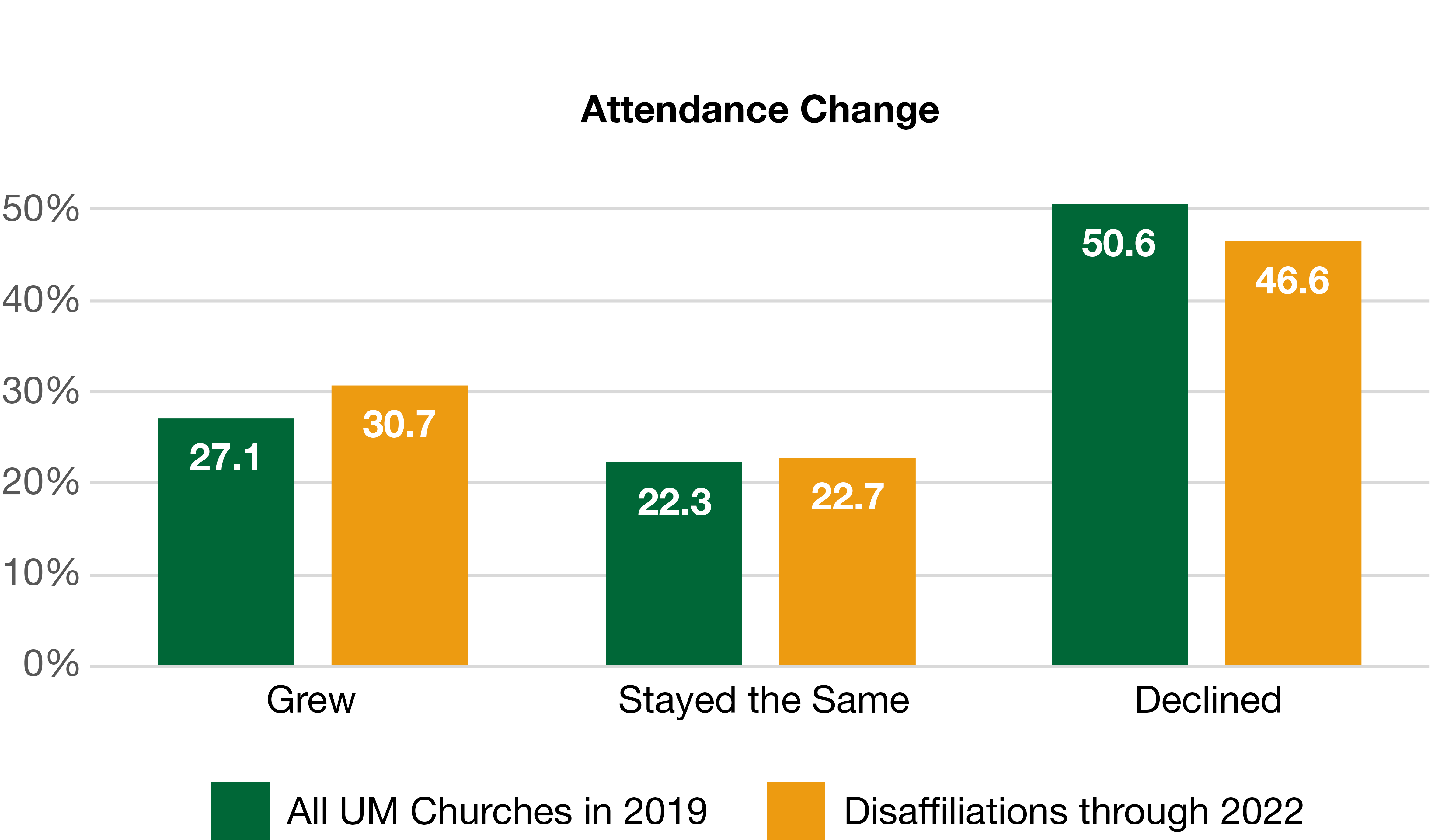
At the same time, United Methodist churches as a whole had proportionately more professions of faith relative to their attendance (one profession of faith for every 30 in average worship attendance) than disaffiliating churches (one profession of faith for every 56 in attendance).
Another measure is to compare professions of faith (new people coming to faith) and deaths. While deaths exceeded professions of faith for both disaffiliating churches and all United Methodist churches, the gap was greater for disaffiliating churches. Deaths exceeded professions of faith for all United Methodist churches by 6 percent. Deaths exceeded professions of faith in disaffiliating churches by 43 percent. (Note: 2019 marked the first year ever in which there were more deaths than professions of faith in the United Methodist Church.)
Location characteristics
Regions
Churches
Compared to all United Methodist churches, disaffiliating churches are disproportionately in the South.
The South Central and Southeastern Jurisdictions comprise 52 percent of United Methodist churches and 84 percent of disaffiliations.
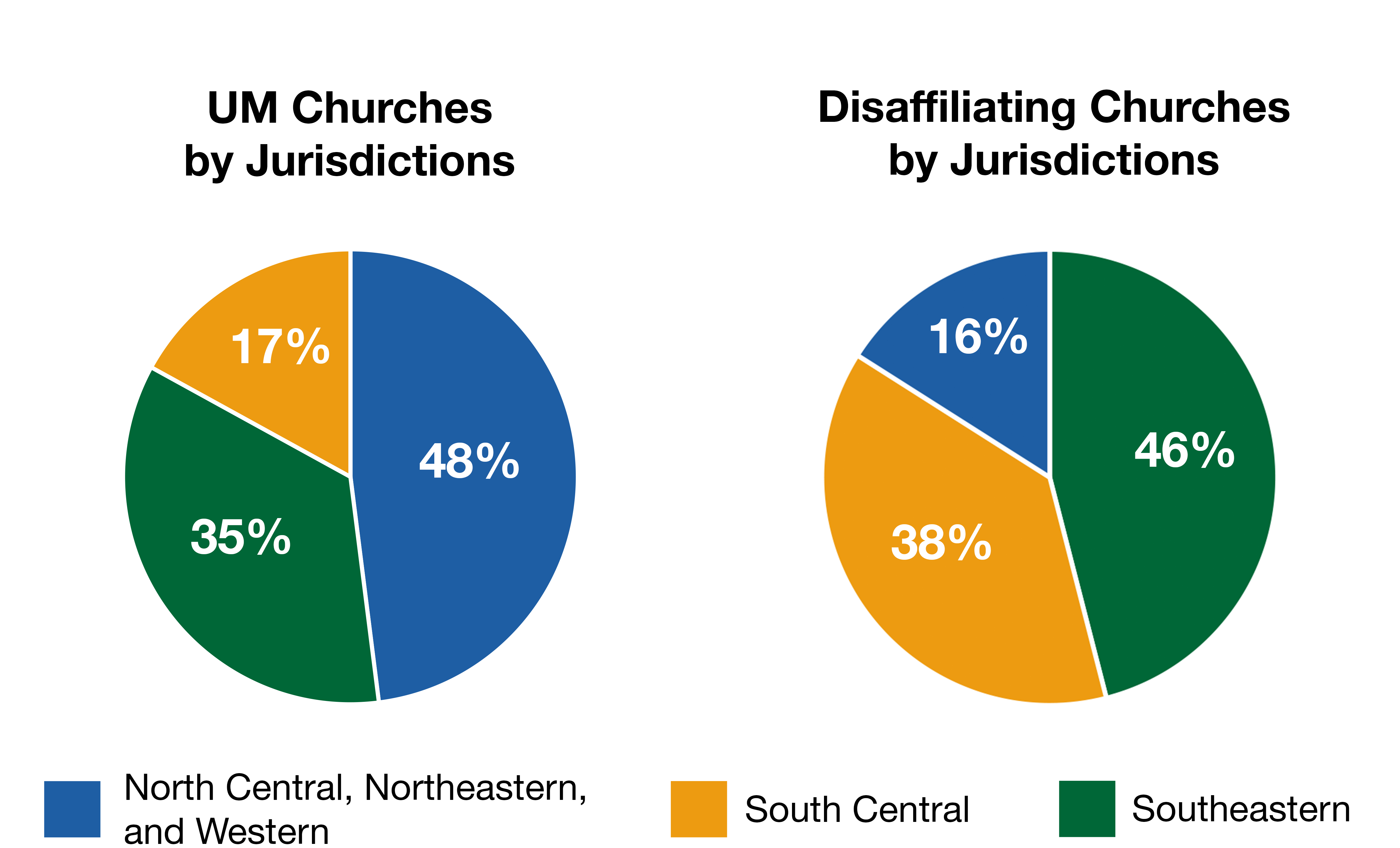
Membership
The South Central and Southeastern Jurisdictions comprise 63 percent of United Methodist membership and 89 percent of the membership in disaffiliating churches.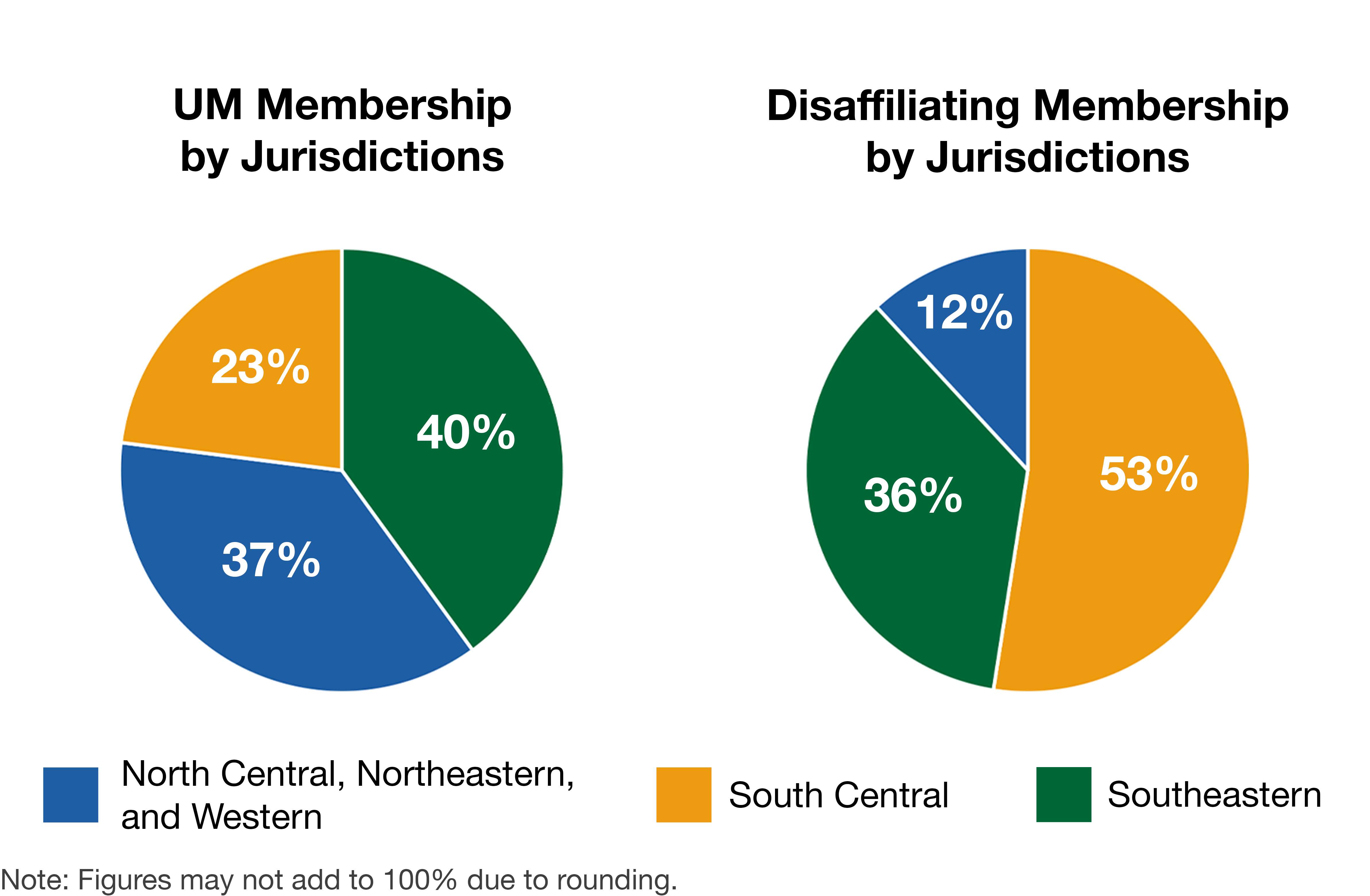
Conclusion
It is impossible to know if further disaffiliations will mirror the characteristics of this first group of about 2,000 churches. There is a good chance that some patterns that are pronounced in their variation from overall United Methodist patterns may continue. The greater differences we found for disaffiliating churches compared to all churches came in the majority racial makeup of the congregation (white), location (Southern), and gender of the pastor (male). It will be interesting to see to what extent these distinctive features continue for disaffiliating churches.
Read and download these full reports:
If you would like to share this article in your newsletter or other publication, please review our reprint guidelines.



